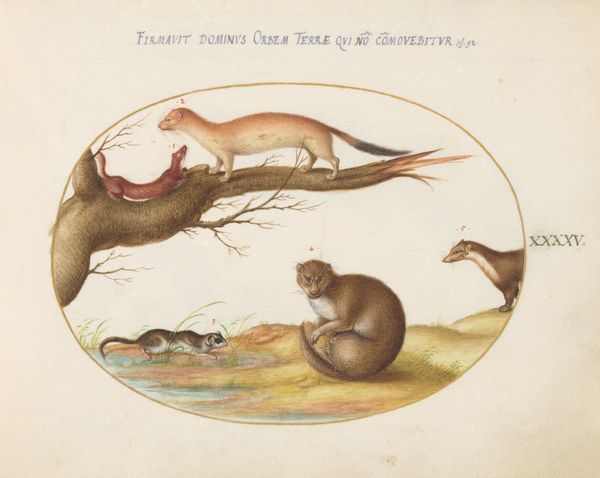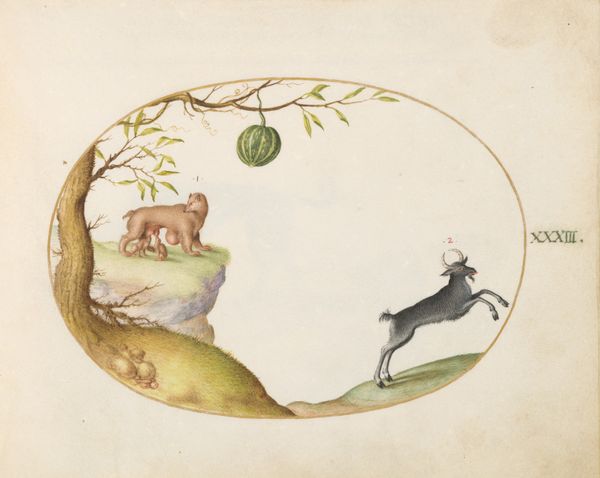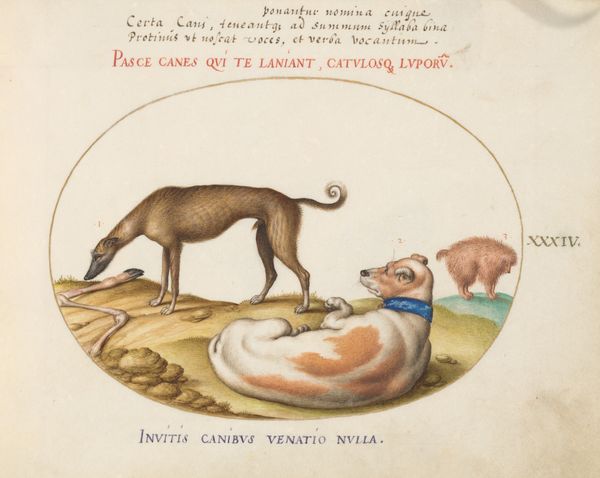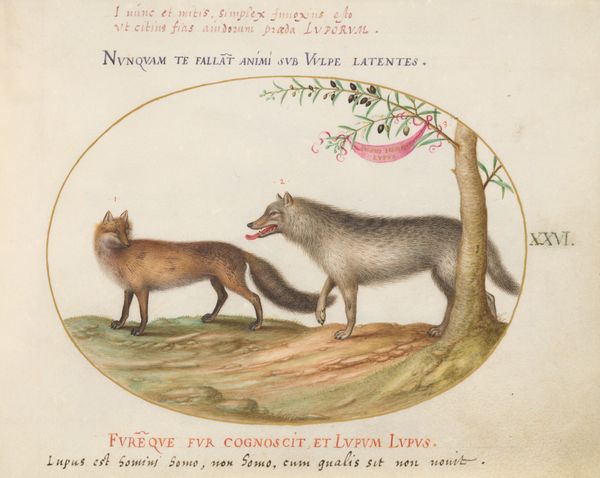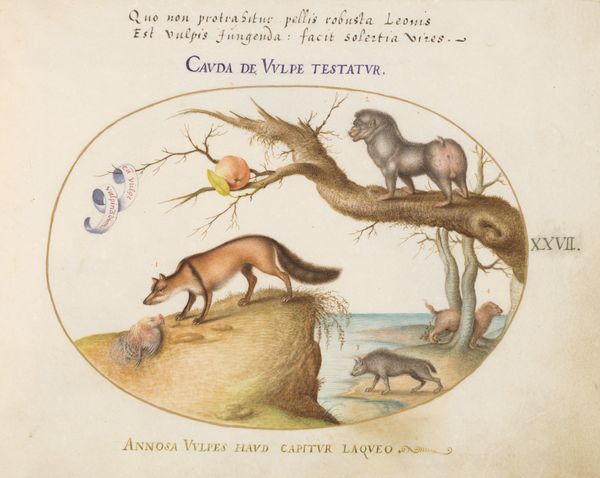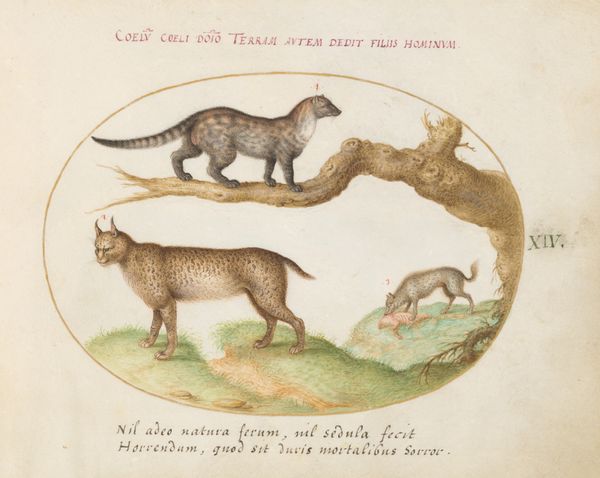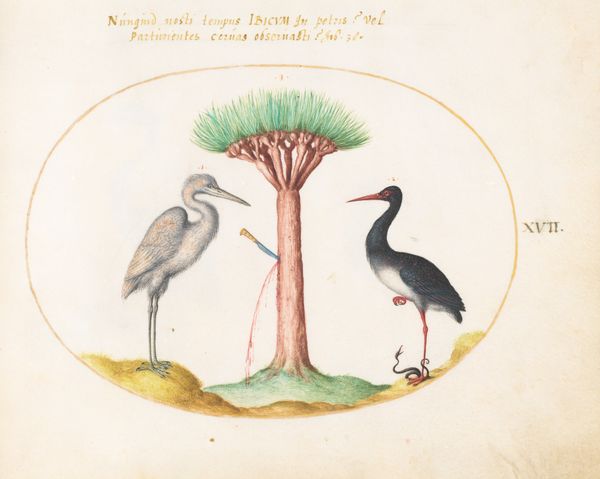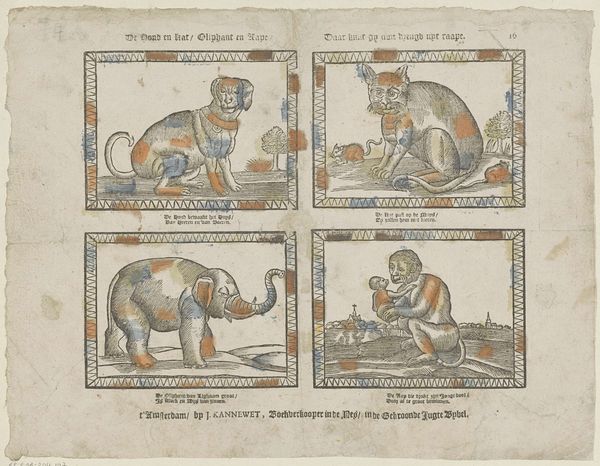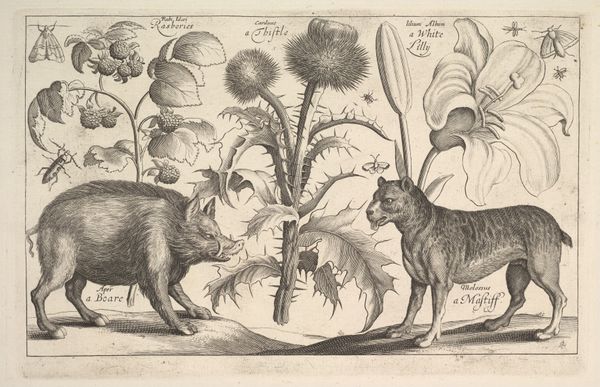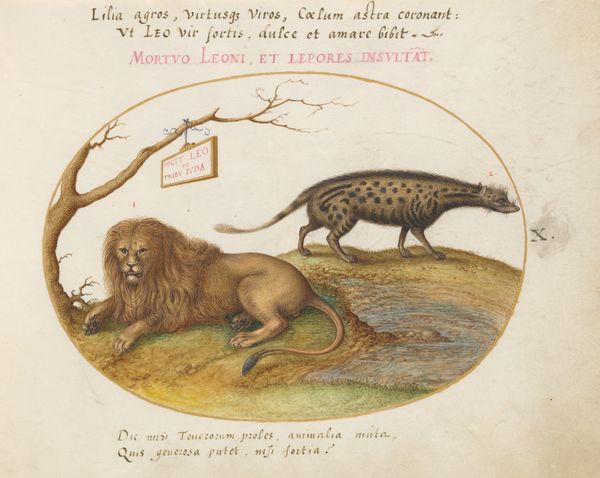
drawing, coloured-pencil, watercolor
#
drawing
#
coloured-pencil
#
water colours
#
mannerism
#
11_renaissance
#
watercolor
#
coloured pencil
#
watercolor
Dimensions: page size (approximate): 14.3 x 18.4 cm (5 5/8 x 7 1/4 in.)
Copyright: National Gallery of Art: CC0 1.0
Joris Hoefnagel made this watercolor and gouache on paper, "Plate 32: Two Monkeys on a Table," around 1575-1600. It’s a vivid depiction of two monkeys amidst fruit and vegetables, but its cultural context tells a more complex story. Made in the Netherlands, this piece reflects the 16th-century European fascination with the natural world, fueled by exploration and colonization. Monkeys, exotic animals at the time, often symbolized human folly and were used to satirize social behaviors. The Latin inscriptions, "Simia non capitur laqueo" (The monkey is not caught with a noose) and "Simia in purpura" (A monkey in purple), suggests a commentary on vanity and deception. The meticulous detail speaks to the rise of scientific illustration and the era's encyclopedic impulse. Yet, it also reveals a power dynamic, a way of categorizing and controlling the natural world. As art historians, we examine such images alongside travelogues, scientific texts, and political documents to uncover the complex interplay of knowledge, power, and representation in this period.
Comments
No comments
Be the first to comment and join the conversation on the ultimate creative platform.

